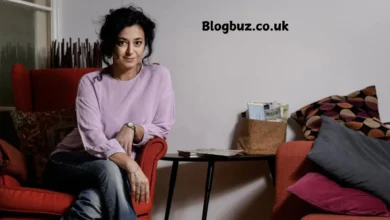Best Minimist Negatie Promt Nsfor Realsim: Maximizing AI Art Generation

In AI-generated art, achieving realism can be challenging, especially with sophisticated tools like DALL·E, MidJourney, or Stable Diffusion. One of the most effective techniques for refining and controlling AI outputs involves using negatie prompts, which guide the AI on what to avoid in an image. For creators who want to generate photorealistic content while avoiding irrelevant or inappropriate details, minimist negatie prompts can be the key. This article will dive deep into the best practices for crafting minimist negatie prompts, how to use them to maintain realism, and why they are essential when avoiding NSFW (Not Safe for Work) content. By the end, you’ll have a comprehensive understanding of enhancing your AI art generation workflow with these refined techniques.
What are Negatie Prompts?
Negatie prompts are instructions given to AI models during the image generation process to tell them what not to include in the output. They are the opposite of standard prompts, which direct the AI toward desired characteristics or subjects. Negatie prompts are handy when aiming for specific results such as realism, where unwanted elements (like overly stylized features or surreal imagery) can compromise the desired outcome.
The Role of Negatie Prompts in Achieving Realism
For users seeking realism, AI models can sometimes introduce creative or abstract elements that detract from a photorealistic finish. By specifying in the negatie prompt what should not appear, users can better control the final result, ensuring the output aligns more closely with real-life imagery.
For example, suppose you’re generating an image of a landscape. In that case, your negative prompt might include terms like “cartoonish,” “fantasy,” or “unnatural colors” to ensure the AI adheres to a realistic aesthetic.
Why Minimalism is Key in Negatie Prompts
A minimist approach to negatie prompts ensures that the AI remains focused on producing a streamlined, realistic image without being overwhelmed by too many restrictions. Overloading the neegatie prompt with unnecessary instructions can confuse the model and result in suboptimal images. The key is to strike a balance between providing the AI with enough direction to avoid unwanted features while maintaining the flexibility to create something visually compelling and realistic.
Crafting a Minimist Negatie
Prompt
To create an effective minimist negatie prompt, focus on key elements you want to exclude without overloading the system. A good rule of thumb is to limit the negatie prompt to 3-5 specific terms or phrases that are most likely to impact the realism of the image. Examples might include:
- “Abstract shapes”
- “Oversaturated colors”
- “Fantasy elements”
- “Anime”
- “Unnatural lighting”
These exclusions ensure the AI stays within the realm of photorealism without creating an overly complicated set of instructions.
Best Practices for Using Minimist Negatie Prompts
When aiming for the most realistic outputs possible, applying the following best practices will help refine your results and get closer to your creative vision.
Start with Broad Negatie
- Terms
Begin by using broad, high-level terms covering major unwanted content categories. For instance, if you’re generating an image of a person and want to avoid artistic stylizations, you might start with terms like:
- “Cartoon”
- “Fantasy”
- “Abstract”
These broad categories block out entire classes of imagery that might detract from realism.
Narrow Down the Negatie Terms Based on Results
Once you have a general negatie prompt, analyze the AI’s output and determine if any specific, more detailed terms need to be added. For instance, you may find that the AI is introducing specific visual quirks like “grainy textures” or “distorted facial features,” which you can then include in your neegatie prompt.
By incrementally narrowing down the negatie prompt, you prevent the AI from going too far in any one direction and maintain a minimist yet practical approach.
Use Context-Specific Negatie Prompts
Suppose you aim to generate a particular image—a hyper-realistic portrait—and tailor your negative prompt to the context. Terms like “cartoonish eyes,” “blurry details,” or “unrealistic proportions” can be used to guide the AI more precisely in creating a realistic human figure.
Similarly, if you’re generating a landscape, you might add terms like “fictional creatures” or “impossible architecture” to maintain a natural, grounded result.
Avoid Over-Complicating the Negatie Prompt
One common mistake is overstuffing the negatie prompt with too many instructions, which can confuse the AI model. Instead, prioritize the most essential terms and let the AI work within those constraints. Over-complicating the prompt can lead to bizarre, unintended results that stray further from realism.
Keeping things minimal allows the model to work effectively within clear boundaries while producing creative, realistic outputs.
Avoiding NSFW Content with Negatie Prompts
Another significant use case for negative prompts is the exclusion of NSFW content. Specific prompts could unintentionally produce inappropriate or adult content when using AI models to generate images. By including particular terms in your negative prompt, you can help mitigate this risk.
NSFW-Related Negatie Prompts
Standard terms to include when trying to avoid NSFW content might be:
- “Nudity”
- “Explicit content”
- “Sexual themes”
- “Suggestive clothing”
- “Provocative”
By incorporating these terms, you help guide the AI model away from generating images that may not be suitable for public viewing, keeping your outputs clean and safe for all audiences.
Realism and NSFW: Striking a Balance
While it’s essential to avoid NSFW content, some AI users find that overly restrictive prompts can sometimes limit the realism of the image. For instance, realistic portrayals of the human body or certain clothing styles could be excluded if the negatie prompt is too aggressive.
To strike a balance, use specific terms that target unwanted explicitness while allowing the AI to render natural, lifelike results. For example, “nudity” is a more substantial exclusion term than “realistic skin tone,” allowing the AI to depict the human figure without veering into NSFW territory.
Examples of Minimist Negatie Prompts for Realism
Here are a few examples of minimist negatie prompts designed for various types of realistic image generation:
Hyper-Realistic Portrait
Negatie prompt: “Cartoonish, distorted, surreal, grainy textures, fantasy”
Photorealistic Landscape
Negatie prompt: “Fictional creatures, artificial colors, impossible structures, dream-like.”
Realistic Object Render (e.g., car)
Negatie prompt: “Abstract shapes, fantasy, unnatural proportions, glossy surfaces.”
Each prompt focuses on just a few critical exclusions, allowing the AI to generate realistic content without unnecessary distractions.
Conclusion
Crafting the best minimist negatie promt is an art form in itself. By following the principles of minimalism, using context-specific terms, and balancing realism with the need to avoid NSFW content, you can enhance the quality and accuracy of your AI-generated images. Whether using platforms like DALL·E or Stable Diffusion, refining your negatie prompts will help you achieve your artistic goals while maintaining complete control over the creative process.
FAQs on Best Minimist Negatie Promt Nsfor Realsim
What is a negatie prompt in AI art generation?
A negatie prompt is a command given to an AI art generator instructing it on what not to include in an image. This helps refine the output by excluding unwanted elements or styles, guiding the AI to produce more controlled and realistic results.
Why should I use negatie prompts for realism?
Negatie prompts allow you to prevent the AI from introducing abstract, surreal, or overly stylized features that may detract from a photorealistic image. By specifying what the AI should avoid, you can better control the overall look of the generated art, ensuring it aligns with your vision of realism.
What is a minimist negatie prompt?
A minimist negatie prompt is a refined set of instructions that uses only a few critical exclusions to guide the AI’s output. The focus is on keeping the prompt simple, allowing the AI to focus on realism while avoiding unnecessary complexity or confusion.
How can I create effective minimist negatie prompts?
To create effective minimist negatie prompts, focus on 3-5 key elements you want to exclude from the image. For example, terms like “cartoonish,” “fantasy,” or “unrealistic proportions” can help the AI avoid those styles and focus on realism. It’s important not to overcomplicate the prompt with too many instructions.
Can I use negatie prompts to avoid NSFW content?
Negatie prompts help avoid NSFW (Not Safe for Work) content. By including terms like “nudity,” “explicit content,” or “suggestive,” you can guide the AI to avoid generating adult or inappropriate imagery.
You May Also Read: Daryn Allene Wood aka Tefnut Light: An Exploration of Art, Spirituality, and Mythology



